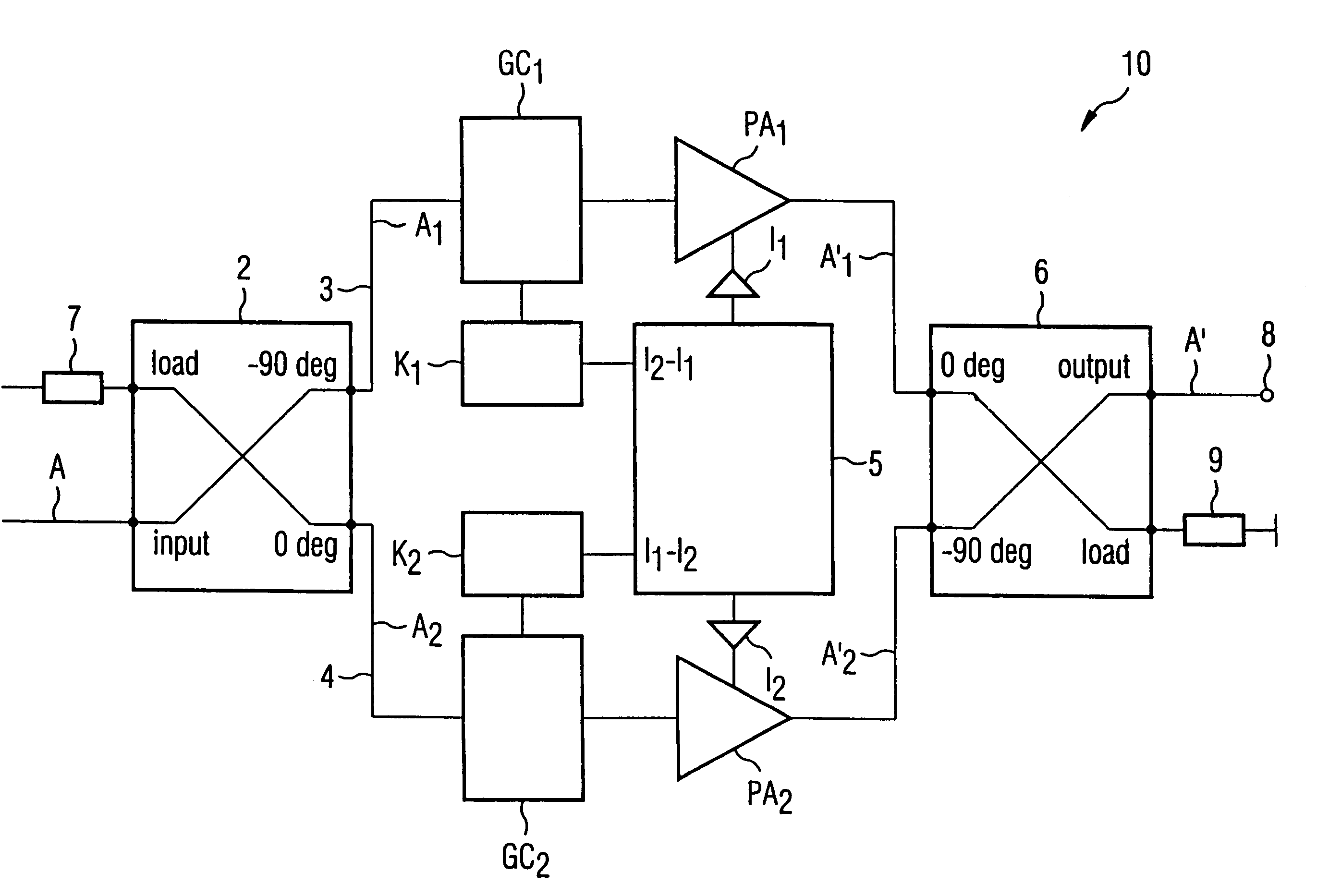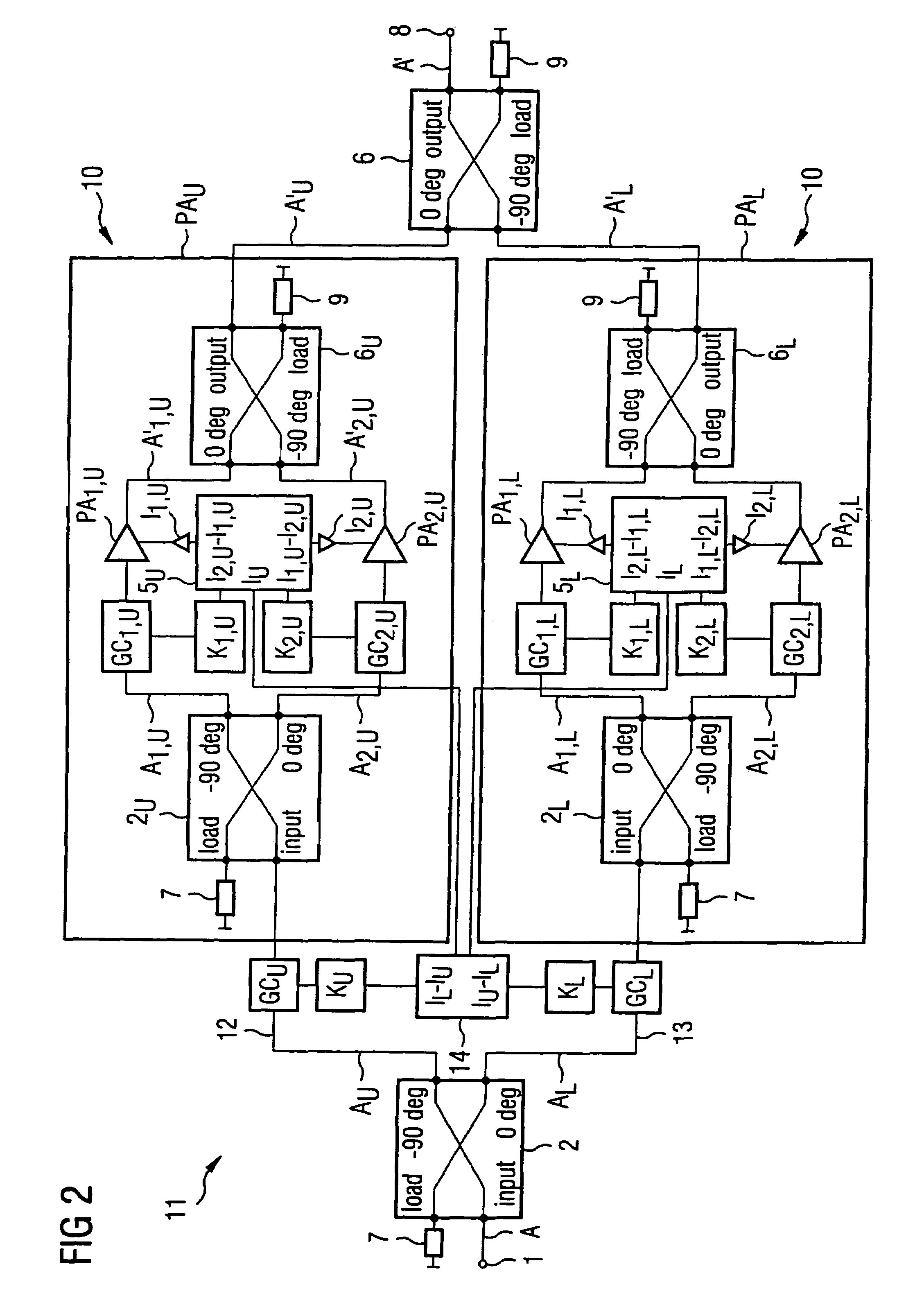Circuit and method for amplification of an electrical input signal
a technology of circuit arrangement and circuit arrangement, applied in the direction of amplifier combinations, gain control, instruments, etc., can solve the problems of increasing power loss in the circuit arrangement, and amplification stages that require different currents. achieve the effect of simple and cost-effectiv
- Summary
- Abstract
- Description
- Claims
- Application Information
AI Technical Summary
Benefits of technology
Problems solved by technology
Method used
Image
Examples
Embodiment Construction
[0030]In the relatively simple exemplary embodiment shown in FIG. 1, the circuit arrangement 10 has only two connected amplification stages PA1, PA2 that are arranged in parallel to one another. These two amplification stages PA1, PA2 are formed from semiconductor power transistors. The circuit arrangement 10 is particularly suitable for amplification of radio-frequency pulses in magnetic resonance systems, which radio-frequency pulses generally being in a frequency range from 10 to 150 MHz.
[0031]On the input side, a signal splitter 2, which divides an input signal A into a first partial signal A1 and a second partial signal A2, is provided in the circuit arrangement 10, with each of the two partial signals A1, A2 exhibits half of the power of the input signal A. For this purpose, the signal splitter 2 has a signal input 1 at which the input signal A is present, a load input which is terminated by a termination resistance of, for example, 50 Ohm, and two signal outputs for the parti...
PUM
 Login to View More
Login to View More Abstract
Description
Claims
Application Information
 Login to View More
Login to View More - R&D
- Intellectual Property
- Life Sciences
- Materials
- Tech Scout
- Unparalleled Data Quality
- Higher Quality Content
- 60% Fewer Hallucinations
Browse by: Latest US Patents, China's latest patents, Technical Efficacy Thesaurus, Application Domain, Technology Topic, Popular Technical Reports.
© 2025 PatSnap. All rights reserved.Legal|Privacy policy|Modern Slavery Act Transparency Statement|Sitemap|About US| Contact US: help@patsnap.com



